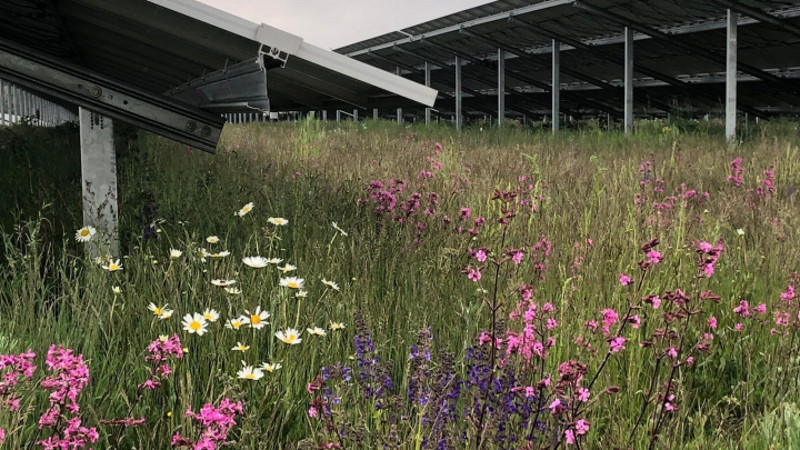From pv magazine Germany.
The issue of vast fields of solar panels restricting other types of land use is still a controversial one for the PV industry but, as the head of Germany’s Federal Association of New Energy Industry Robert Busch said: “Germany is not a plains country but for the climate and energy targets the federal government needs a lot more renewable energy, unless it is … all just lip service.”
The association – the bne – has published a Solar Parks – Benefits for Biodiversity study (Solarparks – Gewinne für die Biodiversität).
The paper’s authors collected data from 75 solar parks in nine German federal states and said their findings painted a positive picture of the environmental benefits offered by solar farms. “As a rule the areas in solar parks show greater diversity, habitat structures remain intact and [solar parks] provide a refuge for different species,” said author Rolf Peschel.
Killing two birds with one stone
The advantages of integrating biodiversity into solar parks was addressed in the November edition of pv magazine. In addition to helping reverse soil erosion, it can also attract myriad insect and plants species, thus reintroducing natural genetic exchange, much of which has been wiped out with intensive agriculture practices. Read the full article
Solar shelters
The scientists claim the installation of ground-mounted plants on derelict land could even raise biodiversity. Open-space PV plants can shelter particular ecological communities. For example, in solar projects in Brandenburg 25 species of grasshopper were found. Solar parks are also particularly suitable as summer habitats for amphibians and reptiles including lizards and frogs. Several bird species were also found in solar fields.
Study co-author Tim Peschel said solar project locations do not suffer the usual over-fertilization of land and the soil is maintained as nutrient-poor as possible. “In solar parks, pre-industrial agriculture is virtually imitated, which favors the settlement of rare species,” he said.
The study states almost half the land suitable for agriculture in Germany – 16.7 million hectares – is used for that purpose, with 60% of it used to grow animal feed, 22% food crops, 14% energy-related crops and 2% plants used for industrial purposes or left fallow or abandoned. The intensive usage of the land which is being exploited for agriculture is leading to a drastic decline in species, according to the report’s authors.
Popular content
So much for the data, winning the battle for solar involves educating regional conservation authorities, a view echoed by solar project developers including Baywa re, EnBW and Wattmanufactur, who say securing approval for sites often depends upon decisions by a conservation official.
Win-win-win
Benedikt Ortmann, from Baywa re, and EnBW’s Thorsten Jörß want the benefits for agriculture and biodiversity – as well as carbon emission reductions – offered by solar to have weight.
“For the goals of the energy transition we have to build photovoltaics much more on the open space,” said Jörß. “Several thousand hectares have to be cultivated annually in a nature-friendly way.”
A recent study produced by Oregon State University, in the U.S, said combining solar power with agriculture offers not only a solution in land-scarce nations such as the Netherlands and Japan but can also improve yield from some agricultural activities and the panels themselves.
Scientists from the European Union’s Joint Research Center recently compiled a comprehensive dataset of the solar energy potential of the bloc’s 28 member states. The data showed even a 100-fold increase on current solar generation capacity would require a very limited amount of land – a lot less than wind power.
This content is protected by copyright and may not be reused. If you want to cooperate with us and would like to reuse some of our content, please contact: editors@pv-magazine.com.



You can this when you compare a cattle fenced solar field with the adjacent cattle grazed land. The difference is pretty dramatic. Native bunch grasses return in the solar field.